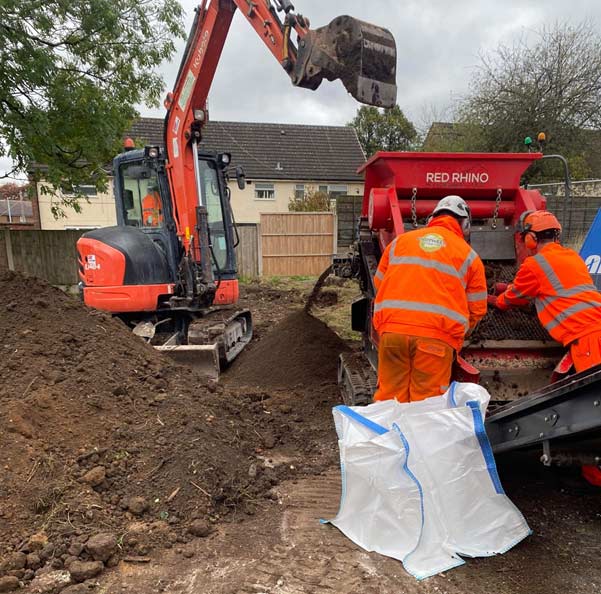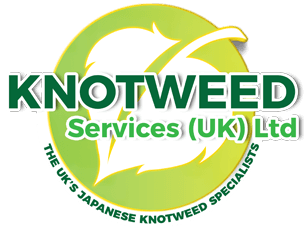JAPANESE KNOTWEED REMOVAL Isle of Wight
2
LIVE KNOTWEED JOBS IN Isle of Wight
67
SUCCESSFUL KNOTWEED REMOVAL PROJECTS IN Isle of Wight
100%
SUCCESSFUL PROPERTY SALES AFTER TREATMENT
1
Isle of Wight BASED KNOTWEED STAFF
NO OTHER JAPANESE KNOTWEED COMPANIES IN Isle of Wight HAVE OUR TRACK RECORD
Knotweed Services is the largest independent company in Isle of Wight to offer a full array of Japanese knotweed management services, from surveying and clearance through to the application of herbicides and electrocution (which is 100% Eco-friendly).
Knotweed Services is a member of the PCA, a government-approved trade body for “the damp, waterproofing, wood preservation and invasive weeds industries”. We deliver the best treatment and control methods for Japanese knotweed removal.
Knotweed Services has successfully controlled many large knotweed infestations in and around Isle of Wight and England. For effective knotweed control to occur, thorough identification, surveying, treatment, and monitoring are necessary.
Japanese Knotweed Growing in Isle of Wight – Its Impact and Control
Japanese knotweed is one of the most damaging plants in the UK. Where it exists, the value of your property can drop by thousands – or even tens of thousands – of pounds. Wherever you are in the UK, we offer a free survey to discover whether you have knotweed on your property and how best to manage it.
If you are a homeowner or commercial land-owner, and Japanese Knotweed is on your property, you may have to wait until the invasive plant is removed properly and legally before your project can proceed.
How bad is Japanese Knotweed?
- Knotweed can grow through tarmac and concrete, threatening the structural integrity of buildings.
- Mortgage lenders often refuse to lend against a building in which Japanese Knotweed is found.
- Knotweed clogs roads and other pathways, obstructing traffic and access to buildings and other structures. The dense root systems of this invasive plant make it a major hassle for commercial property owners.
Knotweed Services – We offer a guaranteed solution to Japanese knotweed in Isle of Wight. All of our services are guaranteed for years to come.



FREE IDENTIFICATION
Fill in the form below, attach your pictures and we’ll let you know if the plant in your picture is Japanese Knotweed.
Call our experts ASAP to begin the treatment and control of your infestation in Isle of Wight
Call us on: 0121 725 6348 or 0800 689 4146 for an swift quote
Knotweed Services is here to help you.
RESIDENTIAL JAPANESE KNOTWEED REMOVAL Isle of Wight.
WHAT YOU NEED TO KNOW ABOUT JAPANESE KNOTWEED REMOVAL Isle of Wight
As Japanese Knotweed infestations vary considerably from property to property, the methods used for its removal will differ, too.
We take a scientific approach to weed control. Our weed specialists examine a site’s specific factors to determine the type of treatments that will give the best results. We guarantee all our work.
— JAPANESE KNOTWEED REMOVAL OPTIONS AVAILABLE IN Isle of Wight

FOLIAR SPRAYING *
The most common treatment is the spraying of powerful chemicals with a knapsack. We ensure that other plants are not damaged. The most effective time for foliar spraying is in Spring.

FOLIAR LEAF WIPING *
With this Japanese knotweed treatment, we use a device to ‘physically wipe’ our chemicals onto the Japanese knotweed leaves. Because this use is so exact, we can often utilise a larger concentration of chemical.

STEM INJECTION
We apply a controlled amount of herbicide directly into the invasive weed. Due to being injected directly into the Japanese Knotweed, this is the most crafty method of removal. It isn’t dependent on the weather.

BIOMASS REDUCTION
Biomass is a sort of excavation and removal, but instead of removing all of the soil affected by Japanese Knotweed, we simply remove the afflicted portions. It is an effective strategy for controlling Japanese Knotweed that permits the reuse of the soil. Reducing the amount of waste dumped in landfills.

CROWN REMOVAL
Removing the crown and stem from the equation is an excellent method since they can regenerate, and even small pieces of chopped crown or stem can regenerate and become a new invasive weed.
— COMMERCIAL TREATMENT OPTIONS AVAILABLE IN Isle of Wight

SOIL SCREENING
A tried-and-true system that has been utilised on hundreds of sites across the UK.
The Japanese knotweed rhizome material is removed from the soil material using the screening procedure. The Japanese knotweed debris is then either transferred to a licenced landfill at a substantially reduced disposal rate or burnt on site using an Environment Agency or Natural Resources Wales D6 exemption.
The cleaned soils can subsequently be used elsewhere, mainly in soft landscaping areas where they will not interfere with construction.
Due to fewer vehicle transfers to the landfill, this can greatly minimise landfill and backfill expenses while also helping to reduce the carbon footprint on site.

BIOSECURITY SUPERVISION
To keep an eye on any digging or shifting of soil containing Japanese knotweed on your property, we can send a biosecurity worker.
We can set up a location where individuals can wash their boots and equipment at the site entry as a part of these precautions. We will supply the primary contractor with all toolbox discussions, which will be signed by all other contractors involved in the operation on site.
In locations where biosecurity is essential, we are able to offer temporary geotextile barriers.
After the service is over, we will deliver a thorough biosecurity report to the client.
This technique can be used in conjunction with other on-site therapeutic strategies.

EXCAVATION AND DISPOSAL
This treatment method is ideal where time constraints are present and there’s no other option other than to remove both the Japanese Knotweed and contaminated soil to a registered landfill.
By removing all traces of the infestation quickly, this offers a rapid solution to your problem and allows your commercial project to begin groundwork’s almost straight away. When time is of the essence, there is no quicker Japanese Knotweed removal/treatment method.
Any waste taken off-site will be done so with a licensed waste carrier to a suitably authorised landfill site.

CELL BURIAL
Cell burial comprises of moving Knotweed contaminated soil from one location on site, burying it in an excavated pit which is lined with a root barrier membrane, in a different position on the site.
The burial requirements for Japanese Knotweed are as follows:
- The Environment Agency recommends that the top of the burial cell should be a minimum of 2 metres below ground level.
- The overall depth of the burial pit should be in excess of 5 metres deep. All root barrier seams are welded together forming an encapsulated cell from which the Japanese Knotweed cannot escape. Clean soil is then used to backfill on top of the cell.
- To prevent accidental disturbance of the burial site, it is recorded on all site plans and future land owners should be made aware of the location.

STOCKPILE & TREAT
Bunding is the method of relocating contaminated Japanese Knotweed soil to a different area of the site being treated. A bund is a shallow area of the contaminated soil, typically 0.5m deep.
The bund can either be raised, on top of the ground, or placed within an excavation to make the surface flush with the surrounding area.
The purpose of the bund is to move the Japanese Knotweed to an area of the site that is not used. This ‘buys time’ for treatment that would not be possible where the Japanese Knotweed was originally located.|Japanese knotweed-contaminated soil can be moved to another portion of the site being treated using a technique called bunding. A bund is a patch of polluted soil that is only a few metres deep.
To make the surface flush with the surroundings, the bund can either be lifted, placed on top of the land, or positioned inside an excavation.
The bund’s function is to relocate the Japanese knotweed to an inactive portion of the land. The Japanese knotweed may now be treated, which would not have been possible in its original location.|Bundling is a technique used to move contaminated Japanese Knotweed soil to another portion of the site that is being treated. A bund is a small, often 0.5m-deep region of contaminated soil.
For the surface of the bund to be flush with the surroundings, it can be raised, placed on top of the ground, or positioned inside an excavation.
The Japanese Knotweed will be relocated to a less-used region of the site thanks to the bund. When compared to where the Japanese knotweed was first found, this “buys time” for treatment.

HERBICIDE APPLICATION
At Knotweed Services we can provide the client with bespoke treatment plans depending on the locations of the Japanese knotweed.
These plans can work in conjunction with other methods of treatment where access is limited to pedestrian movements i.e., embankments or existing pathways within a site.
This will normally consist of up to 3 visits per annum to apply herbicide by either foliar spray technique or stem injection during the growing season over a period of 3 years, with a monitoring period of 2 years thereafter.
We would select the appropriate herbicides depending on the surrounding foliage or environmental constraints.
After each visit a full treatment record would be provided with photos showing the progress of the works and then an annual report.
